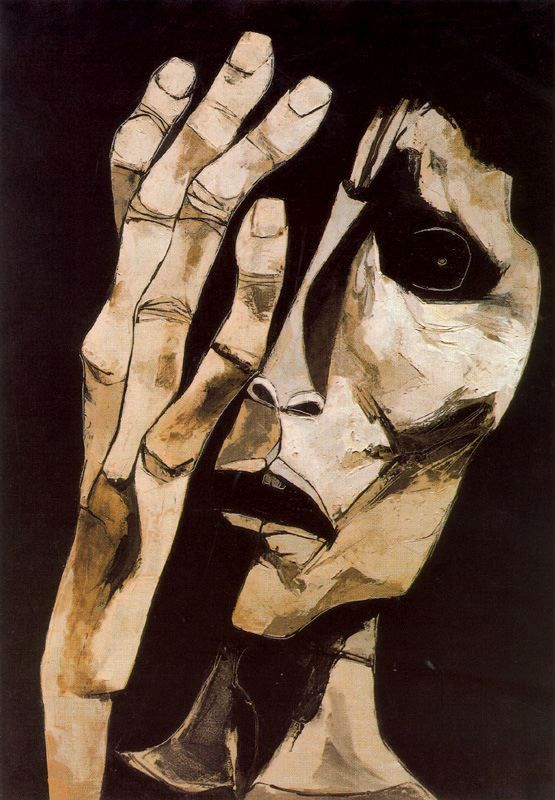
Oswaldo Guayasamin (1919-1999) was born in Quito Ecuador and played an influential role in providing insight and voice for the indigenous peoples of Latin America. He was a highly revered and famous artist especially for his depictions of suffering. As an expressionist he paid much attention to the emotions of people in his art.
Throughout his career as an expressionist artist, he exaggerated proportions and body sizes to demonstrate negative thoughts and emotions experienced by those depicted. His works almost always have very skeletal features seen in the limbs, and gaunt-looking hollow faces providing a background of oppression and suffering for his pieces. In his artwork he commonly uses darker and muted colors to express the perspective of the indigenous peoples.
His artwork is a direct result of the great depression happening in Ecuador from 1925-1948. As a result of huge over inflation and political instability. The depression halted the modernization of the country specifically in education, industrialization, and economics, leading to poverty on a new level for the people of Ecuador. Most commonly, these were mixed race, and indigenous people who felt the most hunger and pains from the economic depression.
The artwork of Oswaldo Guayasamin is a demonstration of the legacy of colonialism, and the caste system. Indigenous people being on the very bottom and most economically vulnerable. His work is exceptionally valuable for understanding the pain during this era of the history of Ecuador, but also for understanding the foundation of discrimination that these colonies were built upon.
Chasteen, John Charles. Born in Blood and Fire: a Concise History of Latin America. W.W. Norton & Company, 2016.
“OSWALDO GUAYASAMÍN B.1919, D.1999 Ecuador.” OSWALDO GUAYASAMÍN – Arts of the Americas, 2006, www.oas.org/artsoftheamericas/oswaldo-guayasamin.
